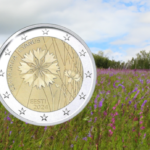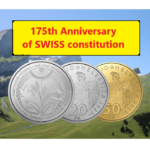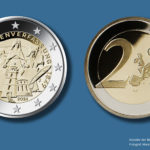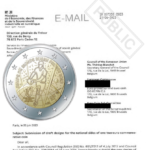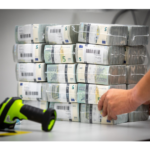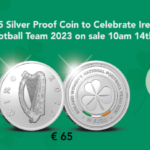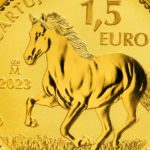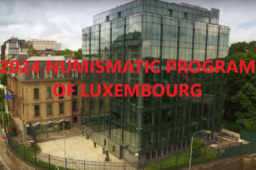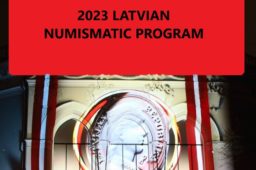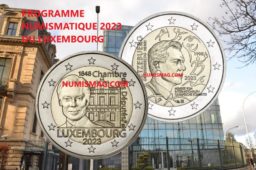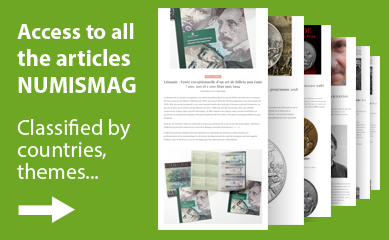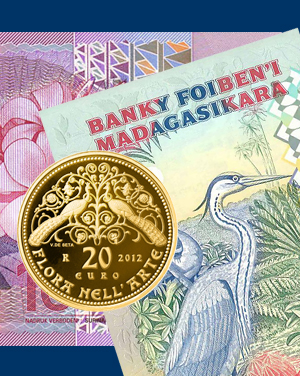
Malta 2021 numismatic program and how central bank plans it
- May 10, 2021
- by
- Pierre

Last update 05/10/2021
The way Kevin Cassar describes the Central Bank of Malta’s numismatic coins clearly suggests that their issue means far more to him than merely work. Ask him which his favourite coin is, for example, and he waxes lyrical about one that depicts one of the lesser known works by one of Malta’s main sculptors – Antonio Sciortino’s ‘Dangerous Sport’ – bringing it to the attention of many people who did not know it existed. Or even a depiction of the Argotti Botanical Gardens conservatory in Floriana, which no longer exists.
Mister Cassar is the curator of the currency museum at the Central Bank of Malta, and also the secretary of the Numismatics and Historical Publications Advisory Board, which was set up in 2017 – taking over from the Currency Advisory Board, and the Treasury’s Currency Advisory Board before that – to decide on the Bank’s annual numismatic coin programme.
He stressed that while the coins have to be aesthetically pleasing, the message they convey is just as important and he spends hours researching the description of the theme, both for the annual brochure, the press release and informative literature that is issued for each new coin.

Mister Kevin Cassar, curator of the numismatic collection
of the Malta Central Bank
Mister CASSAR short Bio
Kevin Cassar is the curator of the numismatic collection of the Central Bank of Malta. He was instrumental in building and augmenting this collection and organized a number of special exhibitions on coin-related themes. He researches on various historical subjects as well as on Maltese numismatic history. He has two published books and contributed various articles.
The selection of the numismatic programme requires careful consideration. Where to start? Some themes – such as anniversaries – are fairly predictable, but the Board tries to include something special among the five or six issued every year by the Bank. Indeed, the coins issued in the past include a series highlighting the prehistoric temples that are such an important part of the country’s heritage, as well as significant events such as the hosting by Malta of the EU’s presidency and the Commonwealth Heads of Government Meeting, and Pope John Paul II’s visit.
Of course, choosing the theme is only the first part of the process. A few designers have added their magic to the Bank’s coins but, for decades, the majority of them were designed and engraved by Noel Galea Bason, who shows no sign of slowing down even though he is now at retirement age. His shoes will indeed be hard to fill.

Once the design is ready, the focus then turns to the mint: the Bank has currently two agreements, one with the Royal Dutch Mint for numismatic coins and the other with the Monnaie de Paris in France for circulation coins. The former finds itself with interesting challenges on its hands, such as the special colour techniques required for coins like the beautiful L’Isle Adam Gradual issued in summer 2020, which represents an illuminated letter from a 16th century choir book.
Another important consideration in a numismatic programme for any central bank is, of course, establishing the amounts to be minted since their value – including that on the secondary market – comes from their relative rarity. Like the Vatican, San Marino and Monaco, Malta issues a relatively small numbers of coins – which greatly adds to their appeal for collectors, the majority of whom are overseas. This means that the Currency Department pays a considerable amount of attention to ensuring that the allocation policy is equitable for all its stakeholders, offering a share of the coins to dealers, online buyers, and keeping the rest for sale over its counter at the main premises of the Bank.
The Malta Coin Centre, which looks after the marketing of the coins, has also set up a register for its regular collectors, which gives advance notifications about launches. If the amount pre-booked exceeds the portion set aside for each category, then the allocation policy may be re-calibrated.
The Bank issued nearly 400,000 coins in 2020 – in spite of the problems and delays associated with COVID-19, like the closure of mints due to quarantine and the logistical problems of transport when movement was curtailed.
2021 Malta numismatics program guidelines
The Board is now preparing for the launch of the 2021 coin programme, and the Malta Coin Centre is again gearing up for a busy year, making full use of innovative marketing campaigns and social media strategy to promote its coins.
Mr Cassar is not in the least bit daunted. He said “We (Central Bank of MALTA) have some wonderful coins planned, each of which has a tremendous message. It’s a real honour to be involved. Here is a quick peak at some of the Malta coin issues planned for 2021”
In 2021, the Central Bank of Malta will continue the series of commemorative €2 coins celebrating Malta’s prehistoric built heritage.
This year, the focus will be on the Tarxien temples, which consists of a complex of megalithic structures built between 3,600 BC and 2500 BC.
These structures first came to light in 1913 and were extensively excavated between 1915 and 1919. This temple was listed by UNESCO as a World Heritage Site. These coins will be issued in rolls and individually in cards, and will also be included in the 2021 Malta Year Set.
Another €2 commemorative coin dedicated to Heroes of the Pandemic will be issued packed in three different coin cards.
The 550th anniversary of the birth of Albrecht Durer will be marked with the issue of a silver coin. Durer was born in Nuremberg in 1471. He was a prolific and versatile artist and a dominant figure of European Renaissance art.
Durer is probably best known for his printmaking techniques, an art form which he elevated to great heights. Durer’s art can be admired in various museums worldwide and the Malta coin will have as its subject one of the Durer prints which is found in the collections of the Mdina Cathedral Museum in Malta.
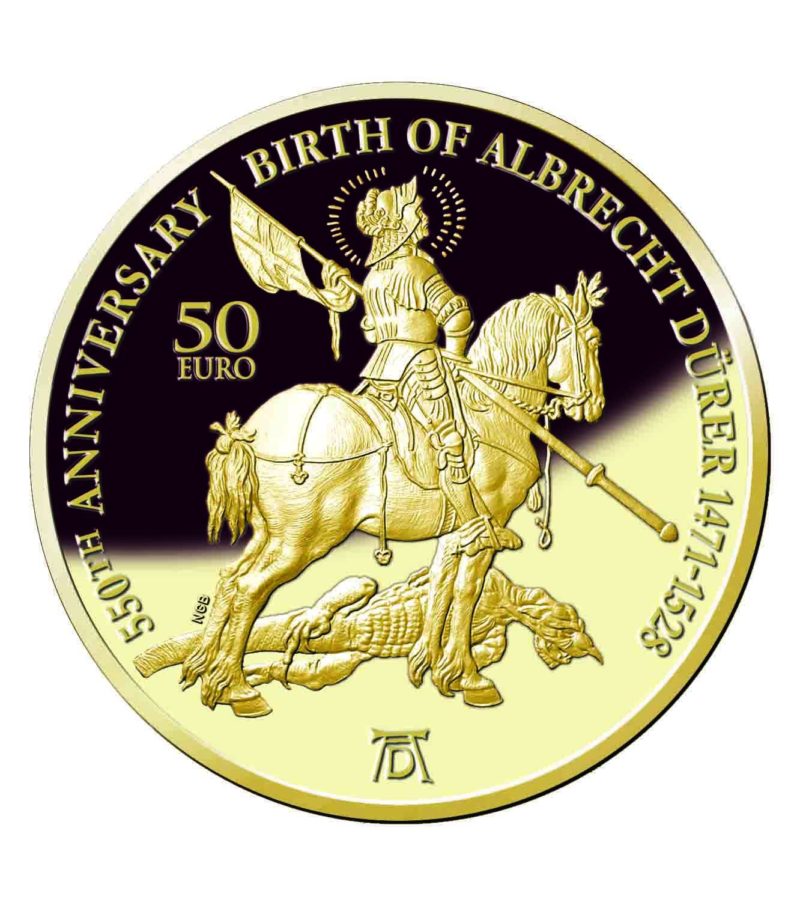
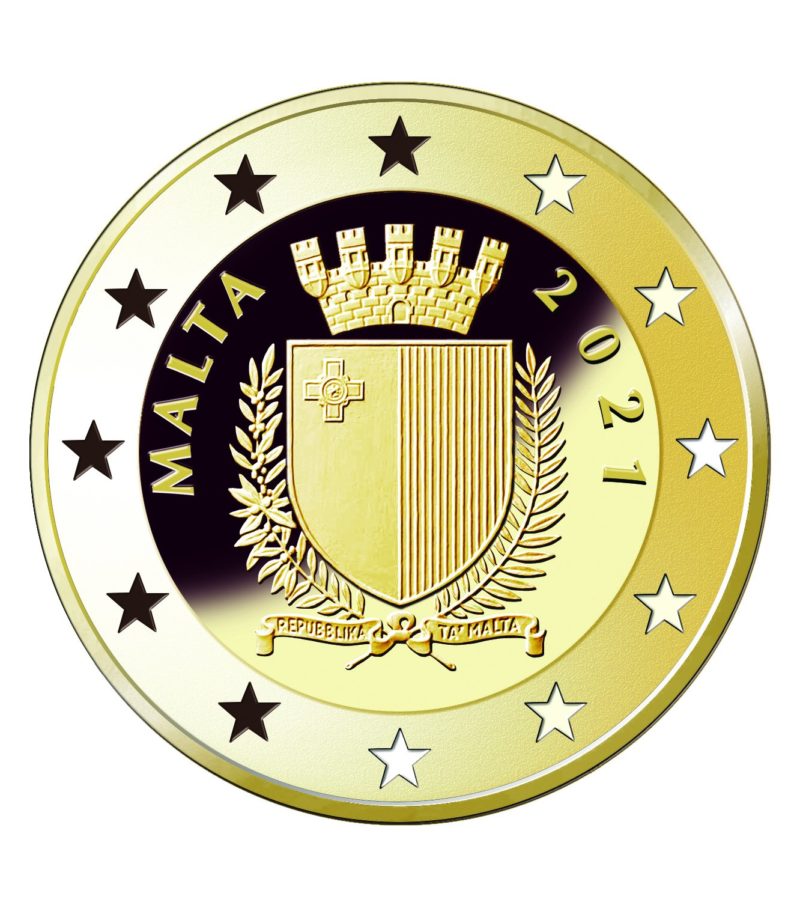
Mintage: 400 coins
Material: Gold
Fineness: 916/1000
weight: 6.50g
Diameter: 21mm
Face value: €50
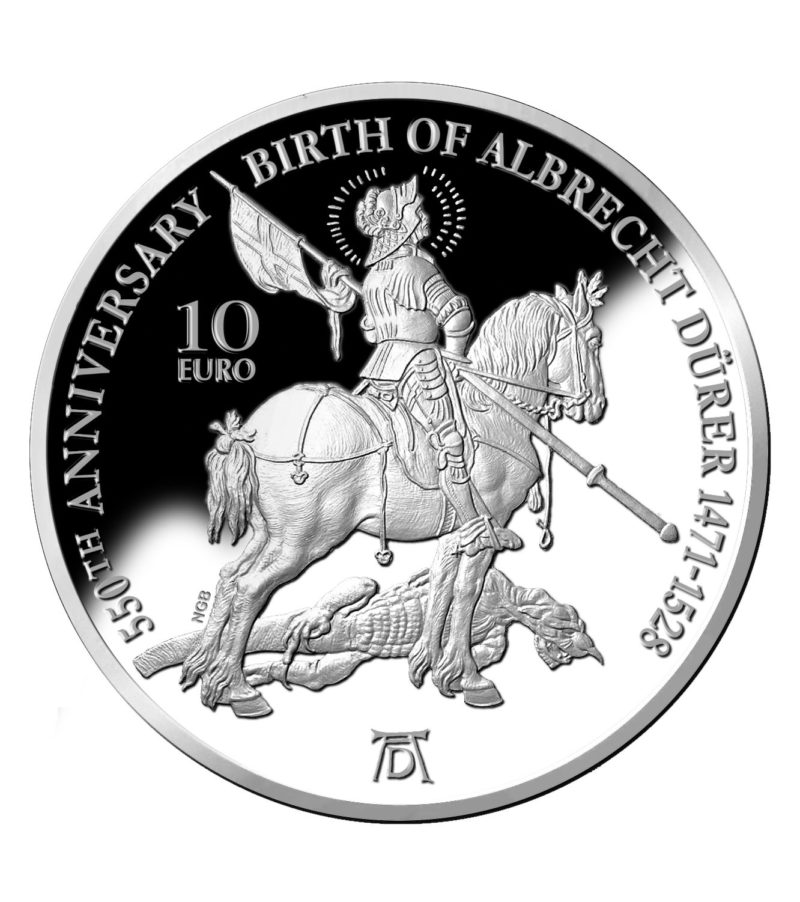
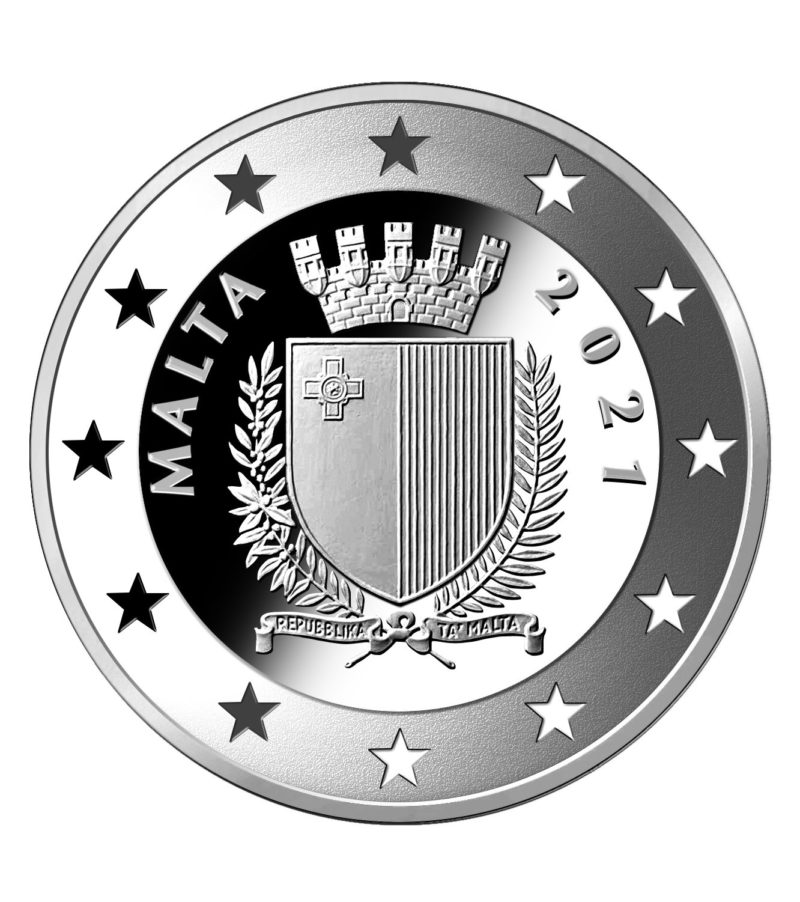
Face value: €10
Mintage: 1,000 coins
Material: Silver
Fineness: 925/1 000
Weight: 28.28g
Diameter: 38.61mm
The coins were designed and engraved by Noel Galea Bason and were minted at the Royal Dutch Mint.
The obverse of the coins features the coat of arms of Malta.
The reverse shows a representation of one of Dürer’s woodcut engravings entitled “St George and the Dragon”.
In the course of the year, Malta will be marking the 100th anniversary of the 1921 self-government constitution. This was a very important milestone along Malta’s tortuous road towards achieving political independence from Britain, and taking her place with the world’s sovereign nations.
The 1921 constitution gave the Maltese a measure of responsible government and also saw the establishment of Malta’s first parliament. The Central Bank of Malta will be marking this anniversary with a once once gold and a silver coin issue.
Another silver coin issue will be depicting the iconic Bibliotheca, which today houses the National Library of Malta. This grand building, located in the very heart of Valletta and one of the very last to be built by the knights of the Order of St John in Malta, was completed in 1796 – 225 years ago.
However, this is not all, and collectors will be delighted to know that the Central Bank of Malta has more in store. But that will remain a bit under wraps for now to maintain an element of surprise.
Malta numismatic institutions history
The Central Bank of Malta has been issuing coins since 1972, while prior to that date Malta used British coinage for its currency needs.
But the logistics of historical minting and distribution has reflected the dynamism of this former British colony. Indeed, the British Royal Mint produced the first Maltese circulation coins after the country adopted a decimal system in 1972.
The Sovereign Military Order of Malta, whose historic presence in Malta dates back to 1530, started to mint Maltese commemorative coins in Rome – thereby, in a way, rekindling its connection with the minting of Maltese coinage which had been severed in 1798.
The Bank then took over the minting of commemorative coins by setting up a mint in Malta using equipment acquired from the SMOM’s mint, with the Malta Mint eventually taking over even the minting of the island’s decimal coins until 1995.
The Bank’s numismatic coin programme had dwindled over the decades but started to pick up again in 2007, when a gold and silver coin was issued. While only 16 coins were issued between 2000 and 2009, 67 were issued in the following decade.
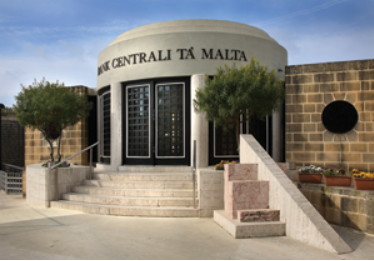
Sources: Central Bank of Malta.


